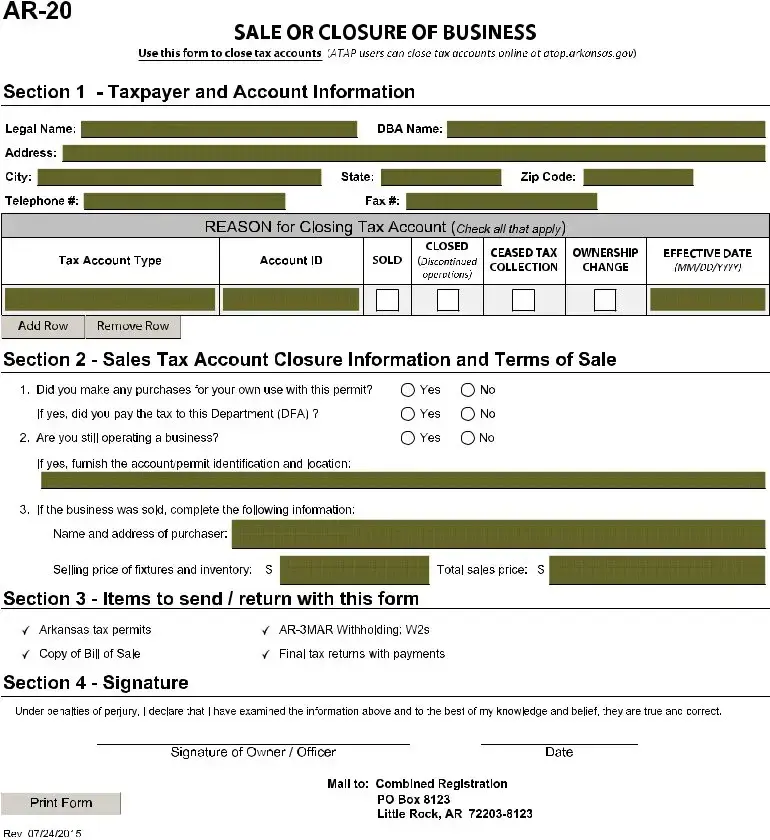When a business goes through significant changes such as sale, closure, or a change in ownership, managing the tax implications of these changes is critical. The AR-20 form, utilized specifically within the state of Arkansas, serves as a vital tool for business owners navigating the closure or sale of their business relative to state tax obligations. By filling out the AR-20 form, business owners can officially close their tax accounts with the state, ensuring a smooth transition during the period of change. The form requires detailed information about the taxpayer and account, including legal and doing business as (DBA) names, contact information, and specific reasons for the account closure, which could range from a sale to ceasing tax collection. Additionally, it gathers data on sales tax account closure and terms of the sale if applicable, asking for information on the business’s operation status post-sale and details regarding any transactions made under the permit. The documentation required to accompany the form, including copies of sale bills, tax permits, and final tax returns, ensures that all relevant information is considered. By signing under penalties of perjury, the owner or officer acknowledges the accuracy and completeness of the information provided, sealing the formal process of closing or altering the business's tax status within the state of Arkansas.

